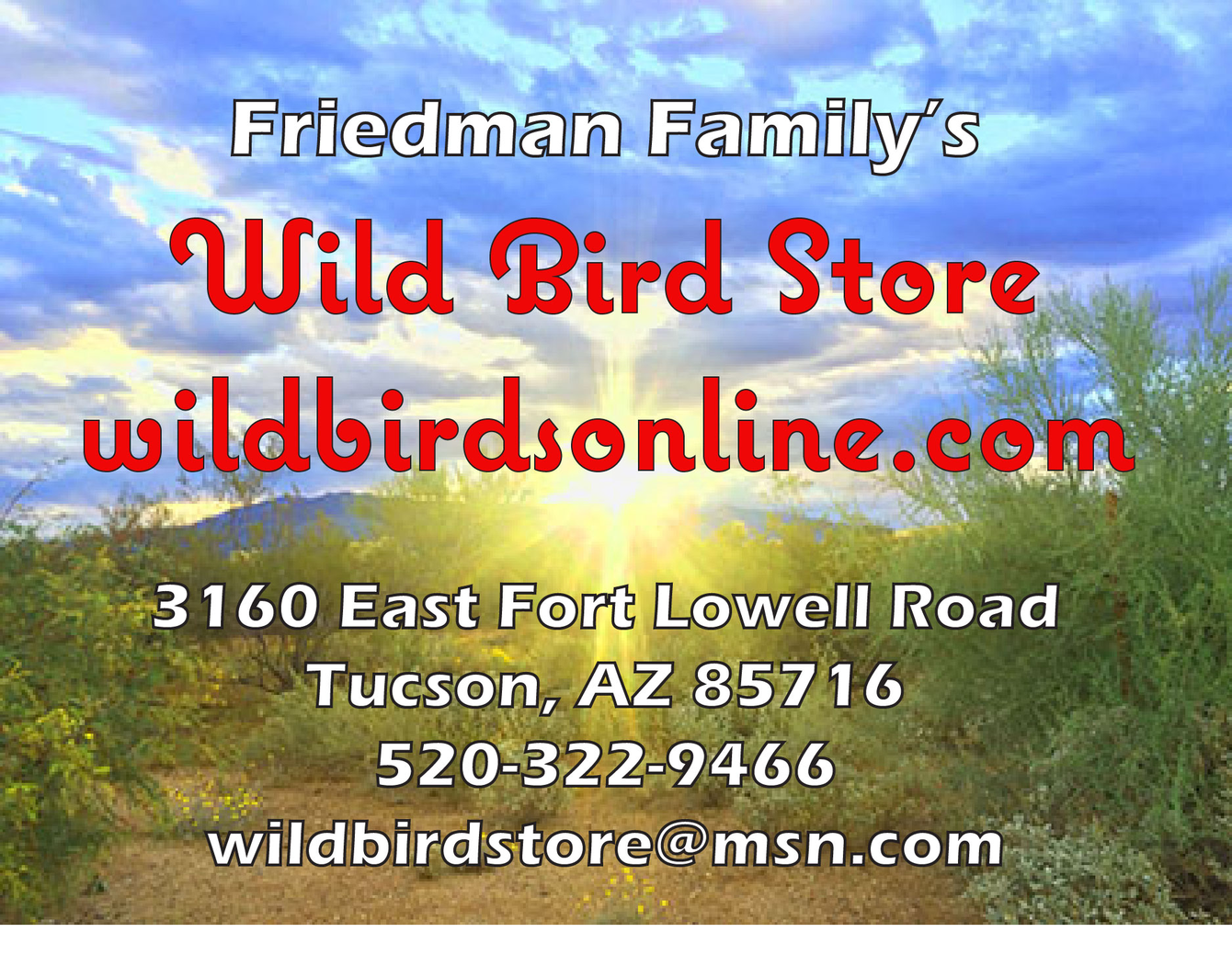Article By Jon Friedman
(Feature Photo by Doris Evans)
Gardening and birding go hand-in-hand with many who have set up bird feeding stations in their yards. To intentionally blend the two into a seamless whole is what some call “birdscaping.” Planting vegetation that attracts and feeds birds, and possibly bats and butterflies, can stand alone or be combined with providing other draws for the wildlife – such as an assortment of feeders to attract favorite species and a fresh daily source of clean water for bathing and drinking. A shallow birdbath in our Sonoran Desert habitat may be most important of all, as all wildlife needs access to water. More birds will respond to fresh water in their daily lives than any single source of food -- it’s just that critical!
Birdscaping simply means planting or providing plants that benefit birds. They may be nectar-producing plants; plants that are hosts to many small insects that birds feed on; plants that provide nesting material or places to put a nest; plants that provide vegetative cover for safe and secure sleeping, preening and roosting sites; and plants that provide hiding places from predators and other intruders.
The list of plants to choose from is quite long, but some worthwhile considerations can help trim the list. What’s the purpose of providing any particular species of plant? Most birdscapers will try to provide some balanced needs for the birds, as listed above. Some plants for each of their needs may be the best balance to achieve.
If, as I believe, birds respond best to what is more familiar to them in their daily lives, then it would stand to reason that native plants would be superior or favored. Birds are more familiar with native plants and inherently know how to use them best. Native plants will usually survive better in our climate with less attention. An assortment of plant sizes will also prove attractive to birds – from ground cover, to bushes and shrubs, to various heights of trees. Areas of vegetative density near open spaces, much as one would find in public parks or the Sweetwater Wetlands, will be inviting to birds. Flowering plants that provide nectar will, for obvious reasons, be better-appreciated than flowering plants that are not nectar-producing.
Feel free to experiment. See what works best for you, your birds, and in your location. Most of the plants that birdscapers will want to use are available at local nurseries. Some may be best grown from seed while others will thrive as mature plants – from pot to ground. The following list of plants should be readily available at most nurseries, and all are native to the Sonoran Desert. Native Seed Search and Tucson Audubon Society can provide further information and materials.
Agave palmeri – Palmer’s Century Plant
Anisacanthus thurberi – Thurber’s Desert Honeysuckle
Aquilegia chrysantha – Golden Columbine
Arctostaphylos pungens – Pointleaf Manzanita
Bouvardia ternifolia – Firecrackerbush
Caesalpinia gilliesii – Bird-of-Paradise Shrub
Calliandra eriophylla – Fairyduster
Castilleja austromontana – Rincon Mountain Indian Paintbrush
Castilleja exserta – Exserted Indian Paintbrush
Castilleja integra – Wholeleaf Indian Paintbrush
Castilleja lanata – Sierra Woolly Indian Paintbrush
Castilleja tenuiflora – Santa Catalina Indian Paintbrush
Cephalanthus occidentalis – Common Buttonbush
Chilopsis linearis – Desert Willow
Cirsium arizonicum – Arizona Thistle
Echinocereus - species – Claret-cup Cactus
Epilobium canum – species latifolium – Hummingbird Trumpet
Erythrina flavelliformis – Coralbean
Fouquieria splendens – Ocotillo
Heuchera sanguinea – Coralbells
Impomoea cristulata – Trans-Pecos Morning-glory
Justicia californica – Beloperone
Linaria maroccana – Moroccan Toadflax
Lobelia cardinalis – Cardinal flower
Maurendella antirrhiniflora – Roving Sailor
Mimulus cardinalis – Scarlet Monkeyflower
Nicotiana glauca – Tree Tobacco
Penstemon barbatus – Beardlip Penstemon
Penstemon eatonii - Firecracker Penstemon
Penstemon palmeri – Palmer’s Penstemon
Penstemon parryi – Parry’s Penstemon
Penstemon pseudospectabilis – Desert Penstemon
Penstemon strictus – Rocky Mountain Penstemon
Penstemon subulatus – Hackberry Beardtongue
Stachys coccinea – Scarlet Hedgenettle
Tecoma stans – Yellow Trumpetbush
